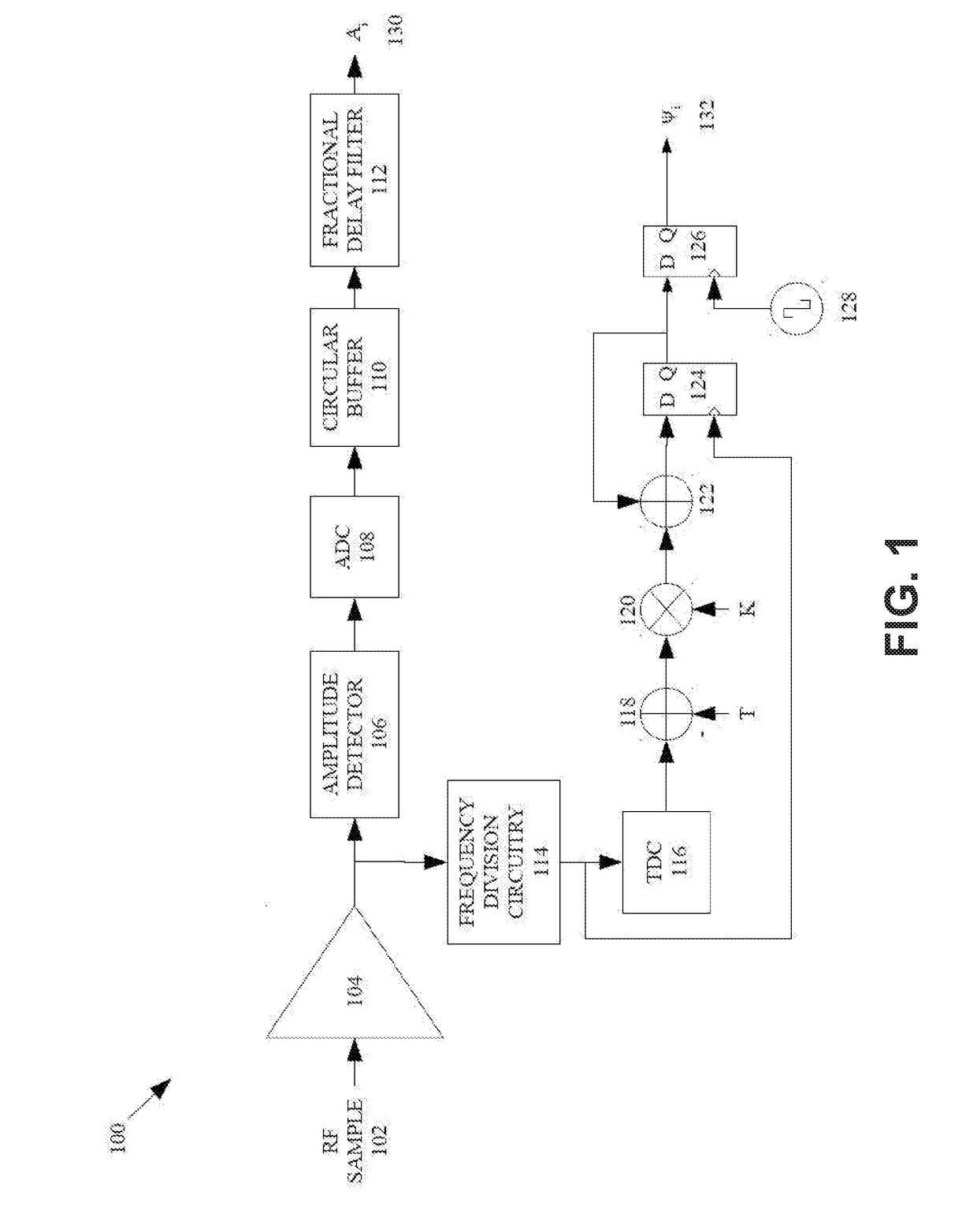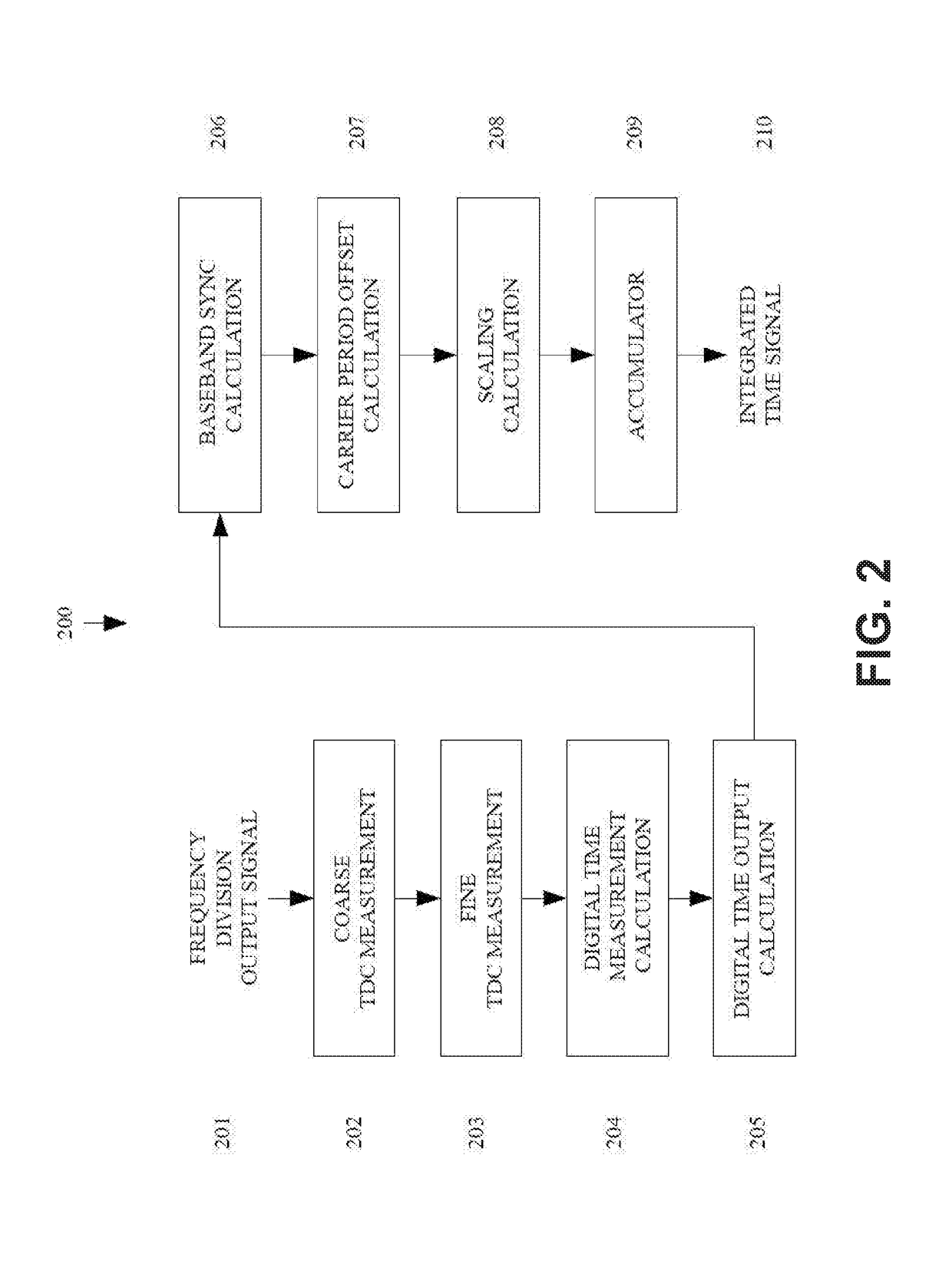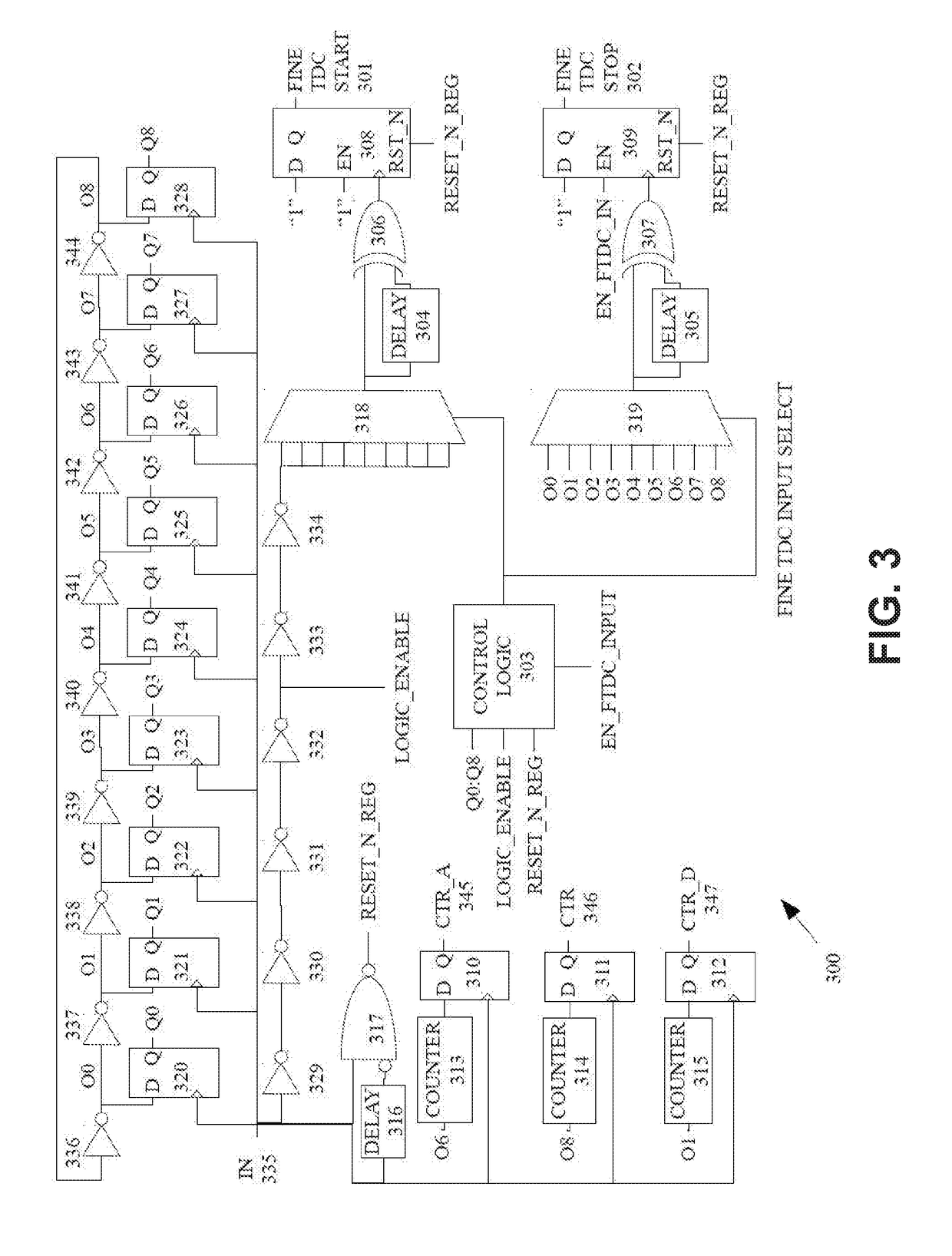Time to digital converter with increased range and sensitivity
a time-to-digital converter and increased range technology, applied in the field of time-to-digital converter with increased range and sensitivity, can solve the problems of too large system handling and coarse estimate errors, and achieve the effect of optimizing analog/rf performance and high performan
- Summary
- Abstract
- Description
- Claims
- Application Information
AI Technical Summary
Benefits of technology
Problems solved by technology
Method used
Image
Examples
Embodiment Construction
[0057]In one example embodiment, an Rx TDC covers a large range (several nanoseconds) with a small resolution (5×10−12 seconds or 5 ps). Various embodiments use a sequence of coarse and fine time measurements to meet the range and resolution usage. Starting with a signal previously processed by other elements of a receive circuit (which will be labeled as the modulated signal), various circuits described herein make a coarse estimate of the period. The circuit makes a fine resolution estimate of the error. The system combines these coarse and fine measurements to arrive at an estimate of the input signal's period. Further processing occurs to convert the time measurement to a phase measurement.
[0058]FIG. 1 is a block diagram of an example polar receiver. A radio frequency signal 102 is received by a polar receiver 100 and may be amplified by an amplifier 104. The polar receiver 100 operates to receive and decode modulated radio-frequency signals, such as signals modulated using phas...
PUM
 Login to View More
Login to View More Abstract
Description
Claims
Application Information
 Login to View More
Login to View More - R&D
- Intellectual Property
- Life Sciences
- Materials
- Tech Scout
- Unparalleled Data Quality
- Higher Quality Content
- 60% Fewer Hallucinations
Browse by: Latest US Patents, China's latest patents, Technical Efficacy Thesaurus, Application Domain, Technology Topic, Popular Technical Reports.
© 2025 PatSnap. All rights reserved.Legal|Privacy policy|Modern Slavery Act Transparency Statement|Sitemap|About US| Contact US: help@patsnap.com



